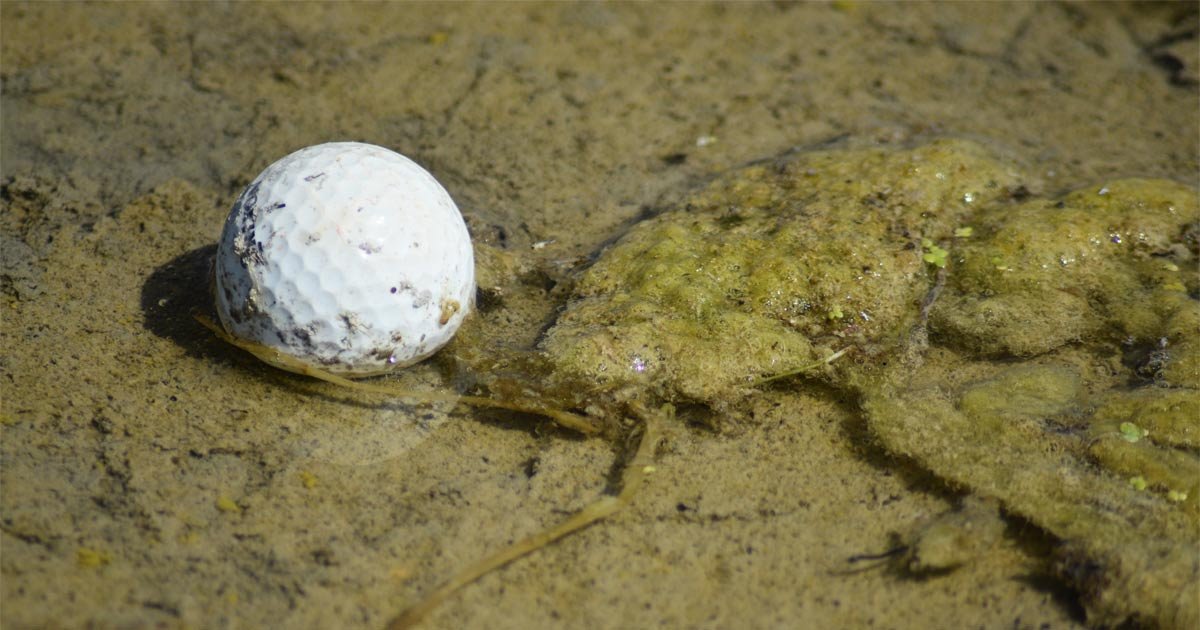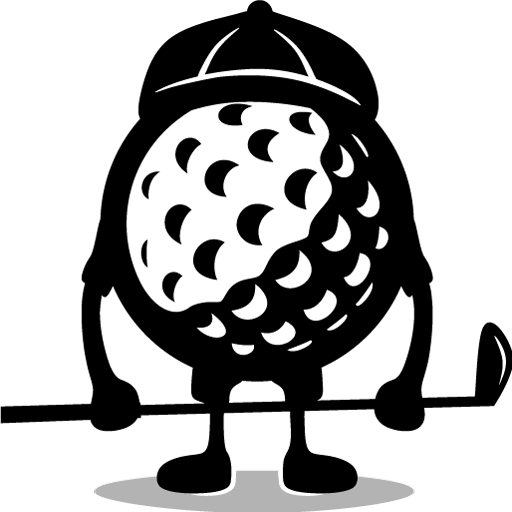A mud ball is a golf situation where the ball contains a varying amount of mud stuck to it. Mud balls are common on days where it is raining or the ground is already soaked. Mud balls occur when a club hits downward on the golf ball at the exact impact location. The typical cause is when the ball hits the ground on a muddy area of the golf course.
As a golfer myself, this has happened many times. I will play golf when it is wet, dry, windy, or in any weather condition. Luckily, I know the nature of the rules and how to hit a mud ball, which I’ll explain in this article. Keep reading to learn all about how mud can impact a golf ball and what to do when you find yourself in this situation.
How Does a Mud Ball Happen?
A mud ball occurs in soft, damp conditions. After it rains for an extended time, the fairway and grass will become wet. When the ball soars through the air and then lands on the soft fairway, the bull will pick up debris, mud, and dirt. Because the ball lands softly, the mud will usually stick to the ball. Therefore, the player will need to account for this on the next shot.
It’s certainly not something that anyone would do on purpose or be happy to see, but it is an unfortunate risk to playing golf after a few rainy days.

How Does Mud Affect the Golf Ball?
Mud balls are not the desired outcome for golf. They are unpopular because they make it challenging to hit the next shot. The debris or mud stuck to the ball will negatively influence your shot trajectory, distance, and curve.
A mud ball affected Bryson DeChambeau’s chances at the 2021 BMW Championship for the FedEx cup playoffs. DeChambeau smashed a drive right down the middle at the par-5 12th hole. Although the ball was in perfect position, he had to deal with a mud ball for his approach shot. Bryson put a decent swing on the ball, but he pushed it right into the greenside water.
Golf experts closely examine the different ways in which the golf ball affects the outcome of the ball. If the mud or debris rests on the left side of the golf ball and the player performs a neutral swing path, the golf ball will fade to the right side.
There could also be times when the mud rests on the top side of the ball, in the back, or at the front. If this is the case, the ball will not travel as far. However, the shot’s direction should stay straight.
The amount of debris or mud also has an impact. If the clump is smaller than the width of your thumb, the ball will slice when it is on the left and draw when it rests on the right. However, if the collection of mud is more massive than your thumb, the ball will usually glide toward the same side as the mud.
What is the Official Ruling with a Mud Ball?
In DeChambeau’s case, he had to play the mud ball exactly how it lay on the ground. However, the general ruling behind the mud ball is a controversial topic in the golf community.
In a standard tournament, you must play the mud ball exactly how it lies. However, the “lift clean, and place” policy is the main exception to the rule. According to the USGA rule, the player can mark the spot where the golf ball rests. Then, they can lift it from the mark, clean it, and then replace it in the same spot it was before.
The USGA outlines very specific guidelines on how you need to mark the ball, lift it, and then replace it. If the player happens to break any of the rules, they will receive a penalty.
Depending on the decision-making of the tournament committee, this rule may or may not get implemented. The committee will usually assess the course and weather conditions. For high school and college tournaments, the committee may consult with the coaches at the event. In the past, the rules committee implemented the policy if it rained a lot in the past 24-48 hours.
The lift, clean, and place policy usually applies to shots only in the fairway of the current hole. Anywhere else, the rules committee will usually force the player to hit the ball as it lies.
How to Hit a Mud Ball
Now that you understand how the ball behaves, it is time to strategize how to hit the ball. There are a few ways you can adjust your swing to make sure the mud ball finishes in a successful spot.
Since the general prediction is for the ball to curve to the opposite side of the mud, you can adjust your aim accordingly. For example, if the ball is on the left side of the ball, you should plan for the ball to go right. Therefore, you should start your aim slightly left of the hole.
Next, it would be best to maintain a normal golf swing. The ball is already going to draw or fade with the mud, so exaggerating your swing could make the shot even more erratic.
It is also smart to not put as much air under the ball. Swinging high on the ball will make it float in the air for longer and feel the impacts of the mud. When you keep the shot low, the mud will not change the flight as much.
Conclusion
As you can see, there is a lot of controversy surrounding the mud ball, but it’s helpful to have a basic understanding of it. Although it can sometimes add difficulty and confusion to your shot selection, there are several things you can do to shoot the ball straight. And if you play in a tournament, there are rules to help keep the game fair.
